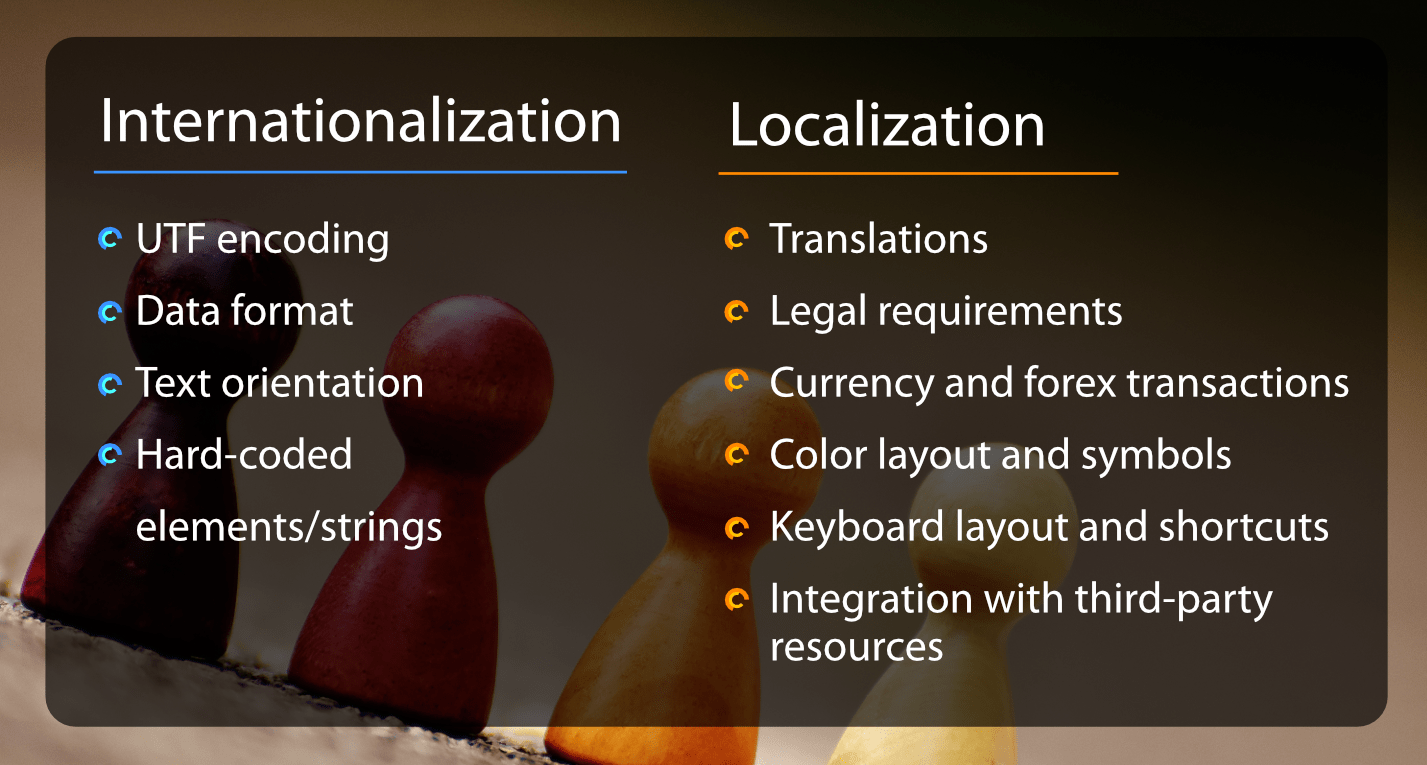
Localization vs internationalization: things to consider while testing
For more than 5 years, a1qa team has been ensuring quality of the app developed for interaction between medical devices. The app guarantees correct and smooth operation from any part of the world.
As for now, the application supports 18 locales, including two Chinese writing systems (traditional and simplified characters) and the Korean language. Thus, both internationalization and localization processes were included in the test plan for the creation of this application.
As these two words – localization and internationalization – sound quite similar, they often put an inexperienced tester in utter confusion. As a result, it becomes difficult to relate test cases to the appropriate type of testing. Hence we would like to distinguish these two definitions in this article.
Globalization makes a way for international use of the product
It is an open secret that the success of any app depends largely on how well it is adapted to work around the globe. The strategy to make the product internationally usable is called globalization.
If a software development company shapes its course on globalization, it is necessary to put in place internationalization and localization, as well as content translation of all software strings to the target languages.
Internationalization (I18n) is a product development process that later allows for adapting the app to various languages and cultural differences. The aim of internationalization is to assure further barrier-free localization. To take an example, the developer should set along a vertical-align property in CSS if it is planned to localize the product for vertical-script language.
Localization (L10n) is the adaptation of a product and its documentation to the language or culture needs of the target market(s).
And now we are turning to the main challenges that I18n and L10n deal with.

The first thing we think of when talking about the internationalization is the use of UNICODE encodings. The use of UNICODE allows supporting most of the world’s writing systems.
The next challenge of internationalization is to support various formatting of dates, calendars, systems of measures, and units of measurement.
It bears mentioning that with the help of internationalization it is possible to change the text orientation and user interface (for example, from right to left interface for Arabic-speaking countries or hieroglyph position vertically down for the Asian region).
Moreover, the allocation of code points into separate source files is one of the basic elements of internationalization. Separate files are convenient as they help to avoid hard-coded elements, in case if the languages are planned to be changed.
Localization: think globally, act locally
As a rule, localization deals with challenges of local context. Translation of the content, translation of the individual elements of UI, messages to users and control elements into all languages foreseen for this product – these are all the examples of localization tasks.
Localization testers should take into account the diverse legal requirements of various countries. Let’s take a look at the legal age of majority. In the USA we get adult from 18 to 21, depending on the state of residence. In Japan you stop being a minor at the age of 20. Thus, while developing an online store, for example, one has to look at the age restrictions for all target regions.
Also, it is important to keep in mind the currency of the country and transactions herewith.
Every software product is designed in specific colour patterns. Color and symbols should be considered as they may bear different meaning in different cultures.
For example, red color symbolizes creed and endurance for Chinese people, while for the Indians it is a color of purity. Europe associates this color with sins and self-sacrifice. People in South Africa see red color as a color of grief and sorrow, in Egypt – mourning, in the USA and Japan – danger and terroristic threat. That’s why we highly recommend paying attention to the color scheme of your product as it could be of critical importance for the success of the application.
Moreover, it is essential to remember about the regional keyboard layouts and hotkeys.
If the application is integrated with other external resources (e.g. cloud storage), it is important to consider their accessibility for all the regions. In China, such services and tools as Google, DropBox, YouTube, Facebook are forbidden by laws.
To sum up, it’s important to undertand that the process of I18n gets into action when the product is to be used internationally, while L10n provides for a set of tools and techniques to adapt the product for the regional usage.
The defects that we meet in the app more often are formed on the basis of the objectives for every process. The types of defects will become the topic for the next article for our blog. Stay tuned!







